Academy 1/48 F-111E
The origins of the F-111 can be traced back to the early 60s, when both the USAF and USN were seeking their new supersonic, heavily armed, twin seat, twin engine aircraft, where Robert McNamara, then Secretary of Defense, formally directed the services to study the development of a single aircraft that would satisfy both requirements.
Designated Tactical Fighter Experimental (TFX), the project raised controversy from the start, as the only areas the two services would practically agree upon would be the (trendy by then) swing-wing, the twin-seat and the twin-engine configuration. For the rest, USAF wanted a 7.33g rated low level penetration attack aircraft, capable of Mach 1.2 at sea level and Mach 2.5 at altitude, while the Navy, less aggressively (which might have presumably pointed to a simpler, lighter, smaller and less costly solution) wanted a 6g rated high altitude interceptor with speed at the neighborhood of Mach 0.9 and Mach 2 at sea level and altitude respectively. While the USAF had no significant restraints to specify a length of 70ft, the Navy would not allow more than 56ft (so the plane could fit at the existing carrier elevators). The Navy would also require a wide cross section nose, capable of hosting a 48 in diameter radar dish.
As it turned out, the TFX's basic set of requirements was based largely on what the USAF wanted, with Boeing, General Dynamics, Lockheed, McDonnell, North American and Republic submitting proposals. Of them, Boeing and General Dynamics were selected to present enhanced designs and, to make a long and somewhat complicated and controversial story short, despite the fact that the Navy found both unacceptable, Boeing's proposal was picked by the selection board after two rounds of updates. Interestingly, it was General Dynamics that was finally selected to develop the TFX, as its proposal featured greater commonality between the USAF and USN versions (which were named F-111A and F-111B respectively).
Both variants would share the same basic air frame, engines and side-by-side seats in an escape capsule. The USAF version would feature the AN/APQ-113 and -110 attack and terrain-following radars respectively, using air-to-ground armament. The Navy version would feature the AN/AWG-9 Pulse-Doppler radar to guide its AIM-54 Phoenix missiles and, apart from a shorter nose by 8.5ft, would have 3.5ft wider wings, to improve endurance.
Since General Dynamics had no experience on carrier fighters, they teamed with the established Grumman, in order to develop the Navy version. The partnership extended to Grumman, in addition, building the aft fuselage and the landing gear of the Air Force version.
While from the start the jet was fast, early flights were troubled by compressor stalls, attributed (at least partially) to the intakes, which led to the redesigned “Triple Plow” ones. Another issue that plagued the bird's early career were the quickly developing cracks in the wing attach points, with the entire fleet grounded for more than six months, where a structural redesign of the problematic area took place.
Regarding the distinctive side by side crew arrangement, though some scarce reports indicate that, at least at some point, the USAF might have seen the concept positively, the conceived perception is that it was a Navy prerequisite. It is kind of strange how things sometimes go, though, as, finally, the Navy went for tandem seating with their F-14.
With the Navy version still in development, USAF F-111s started to be delivered at Nellis AFB from July 1967, with the 428 TFS achieving operational capability by April 1968. Already from March, six aircraft from 474 TFW “Roadrunners” were sent for nine months to Southeast Asia for testing in real combat conditions. A considerable three aircraft were lost during 55 missions. While the cause of the first two losses was unknown as the wreckages were never recovered, the third loss was due to a failure of the horizontal stabilizer hydraulic control valve rod, causing the jet to pitch uncontrollably, with good chances to be the reason for first two losses, as investigation of the fleet revealed another 42 aircraft with the same potential failure.
Meanwhile, despite the significant amount of work and, to a degree, the encouraging results the Grumman / General Dynamics joint effort yielded, the Naval F-111B (a plane that, truth be told, the Navy did not want from the start) was finally canceled in 1968 on account of weight and performance issues together with revised tactical requirements (including, among others, dog fighting doctrine, something that the F-111 was not designed to perform).
From September 1972 onward the type was re-deployed to Southeast Asia. Its crews, among other crews, soon realized that "Speed is life", "One pass, haul a*s" and "You do more than one pass in a target area you die". Having by that time its teething problems addressed to a good degree, carrying four times the payload of an F-4 Phantom, with the terrain-following radar enabling it to fly as low as 200 ft above the ground level at almost 500 knots, needing no tankers or ECM support and operating in weather that grounded most other aircraft, it came as no surprise that this effective aircraft flew more than 4,000 combat missions in Vietnam with only six combat losses and with North Vietnamese calling the bird "Whispering Death".
On 14 April 1986 the plane took part in Operation El Dorado Canyon, conducting air strikes against Libya. The 18 F-111s augmented by 4 EF-111s performed a round-trip flight of 6,400 miles between the United Kingdom and Libya, spanning some 13 hours. With one lost (probably shot down), the operation was considered a success, as it achieved precision strikes against targets thousands of miles away.
The effectiveness of the F-111 continued during the 1991 Operation Desert Storm, where the type carried out 3.2 successful strike missions for every unsuccessful one, better than any other U.S. strike aircraft used in the operation. The group of 66 F-111F dropped almost 80% of the war's laser-guided bombs, including the penetrating bunker-buster GBU-28. Dubbed as "tank plinking" in the anti-armor role, the F-111 was credited with destroying more than 1,500 Iraqi tanks and armored vehicles.
During its initial development, it was falsely believed that the plane looked quite simple to maintain. In reality, though, it proved expensive to operate. With USAF wasting no time to spread its roles to the F-15 and B-1, the attack versions were retired in summer 1996 and the EF-111 electronic warfare variant in 1998. Australia, the only other user, retired its fleet by end 2010. In total, 563 examples were built.
Officially named Aardvark (which was its unofficial name when in service) after its USAF retirement, the F-111 rose a lot of controversy, especially during its early days (with factors including, but not restrained to, its capability to fulfill both the Air Force and Navy requirements, its complexity, the elevated costs for both development and production, let alone the money spent for the ultimately canceled Navy version and its high operational costs).
Tailored towards USAF's requirements, the plane effectively solved its teething problems to a good degree and quickly matured to a potent attack/bomber. With its complexity partly attributed to its role (the available technology of the era was pushed to its limits, in order to fulfill the aggressive requirements) and partly to some questionable design choices (the impressive in paper but too complex in practice escape capsule springs into mind), the iconic F-111 (and I am sure Yours Truly is not the only one considering the plane an icon of the past) was present when needed and mission-effective.
This is the 1997 reboxing of the venerable 1987 Academy mold. Definitely not intending to challenge the vastly modern 2010 Hobby Boss offering, it is a decent kit that can still hold its own today. Should you wish to read the full build review, you may do so by visiting my beloved site Modelingmadness:
https://modelingmadness.com/review/viet/us/usaf/fighters/pen111.htm
Happy Modelling!
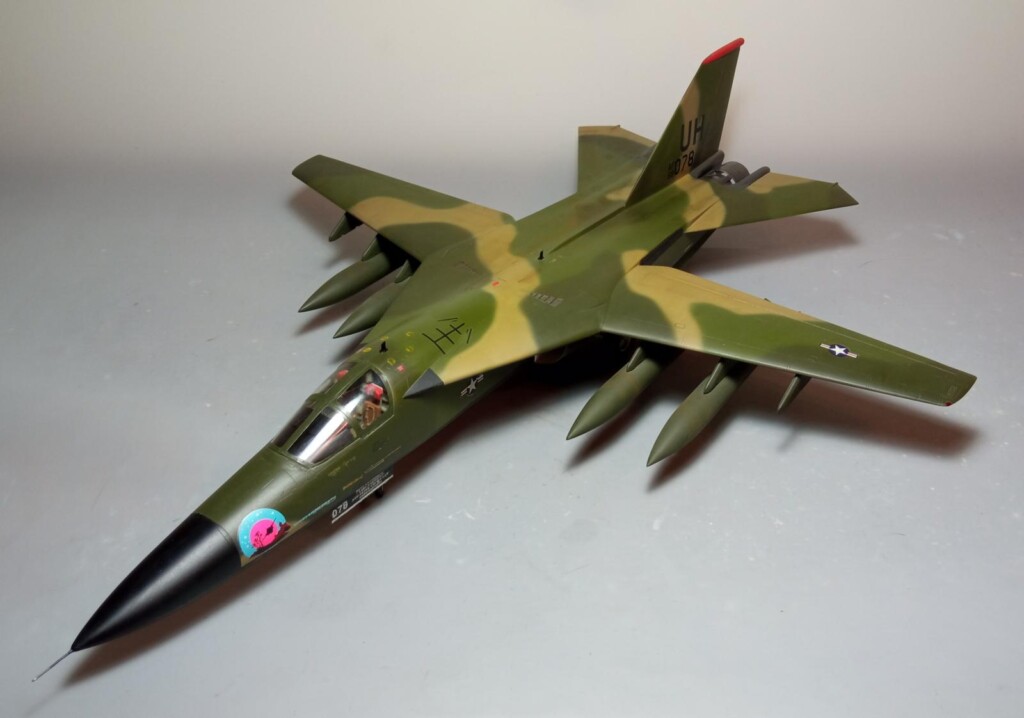

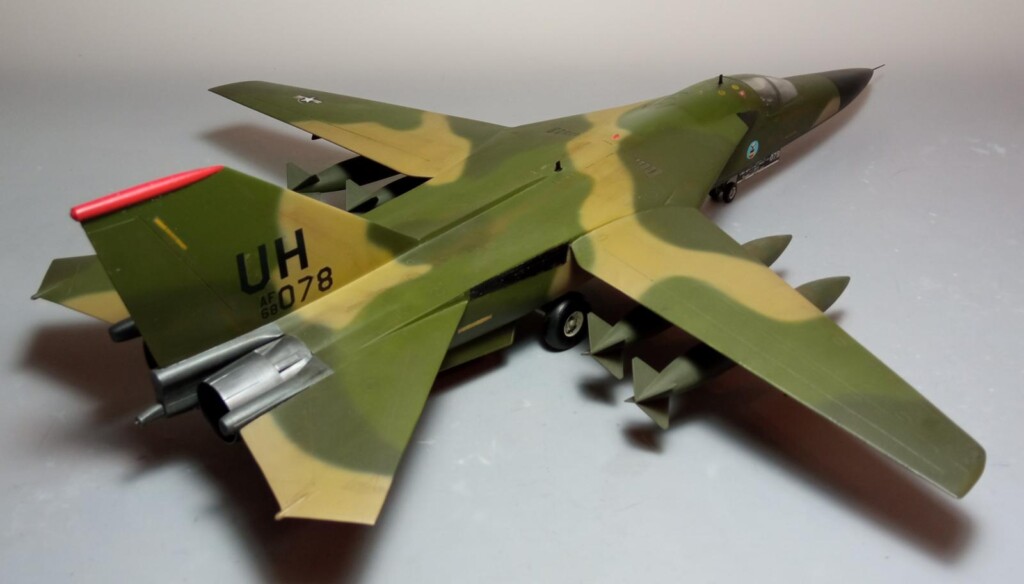
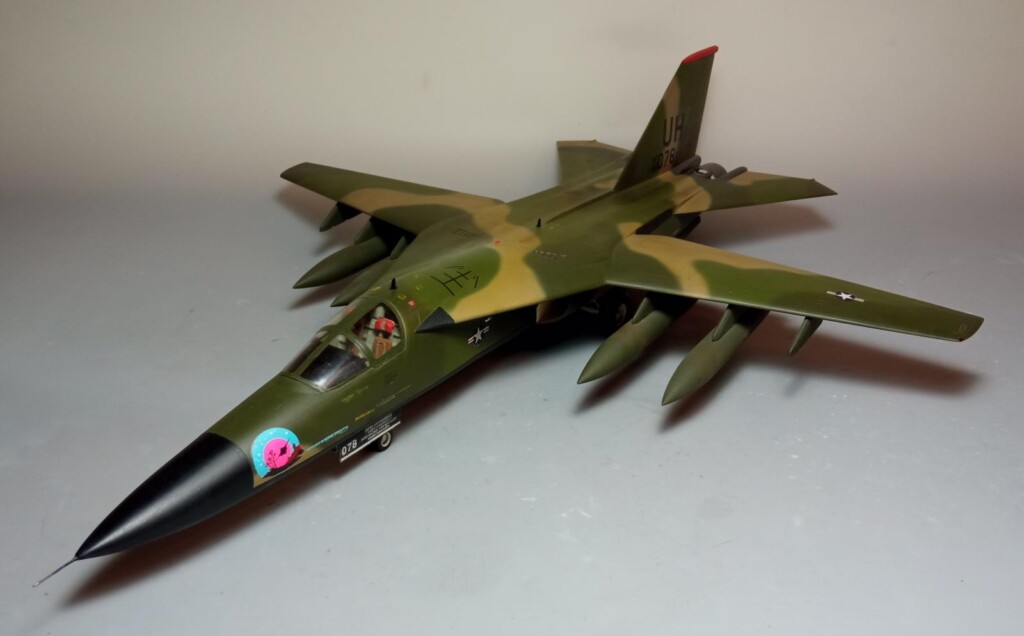
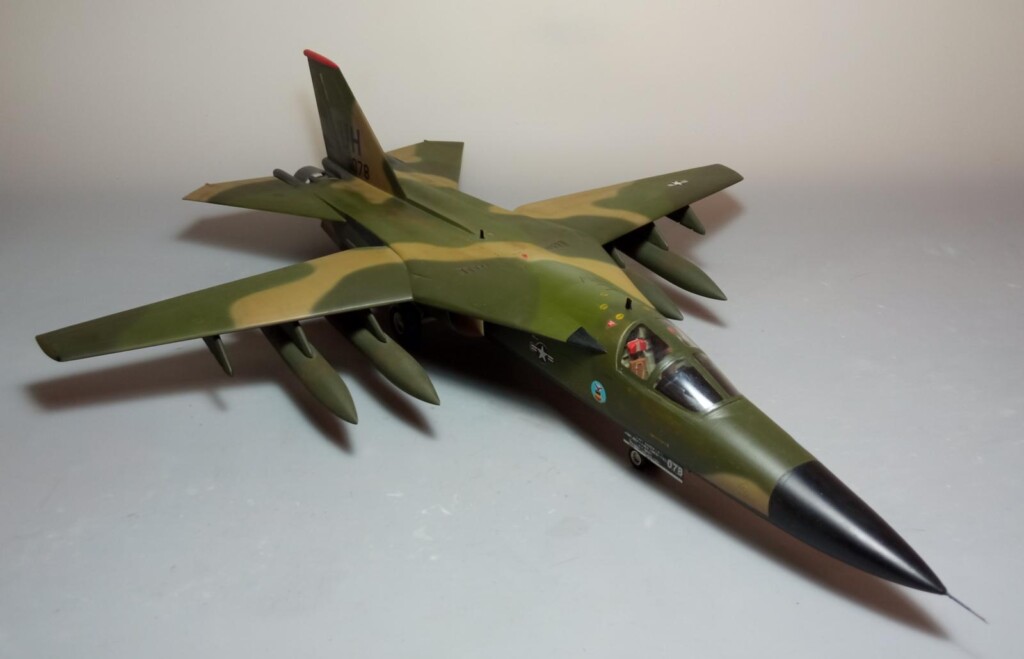
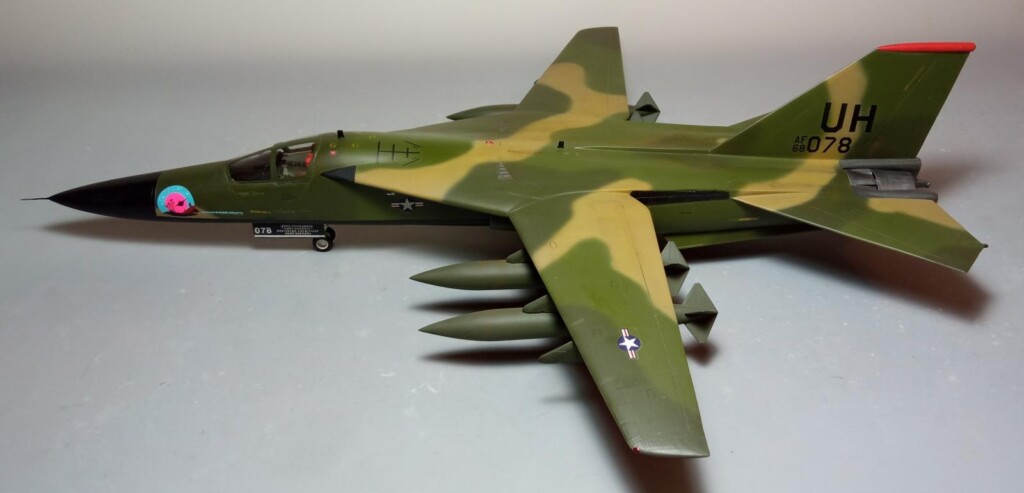
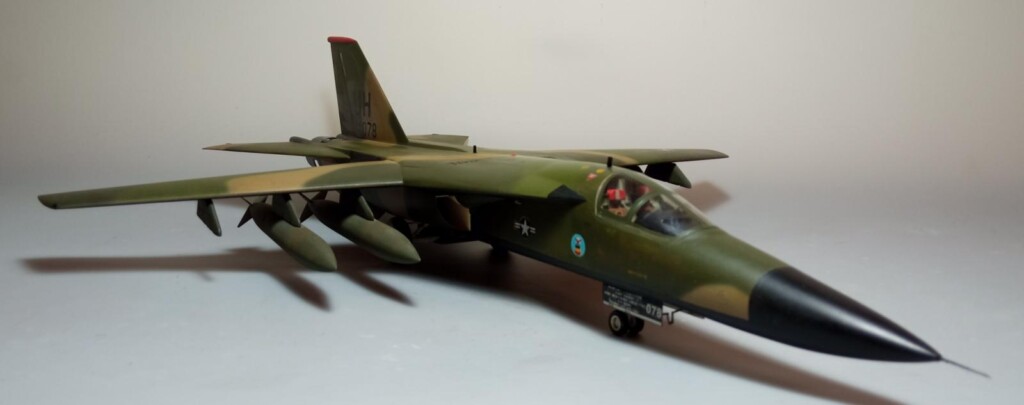
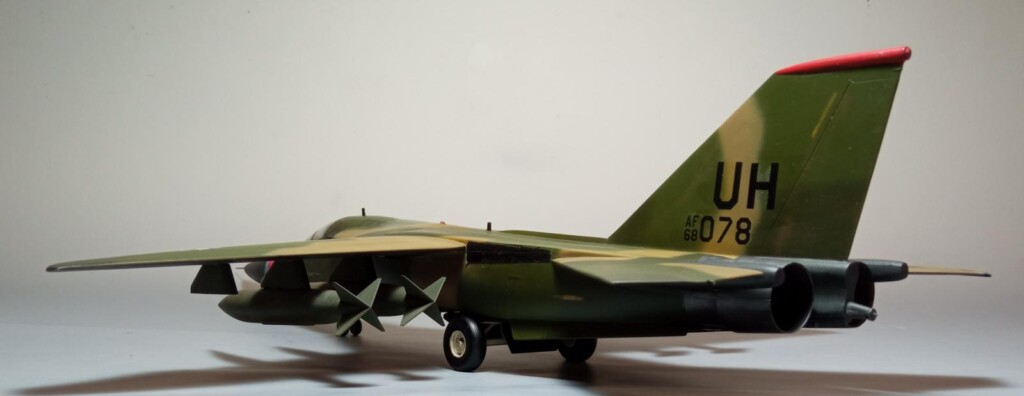

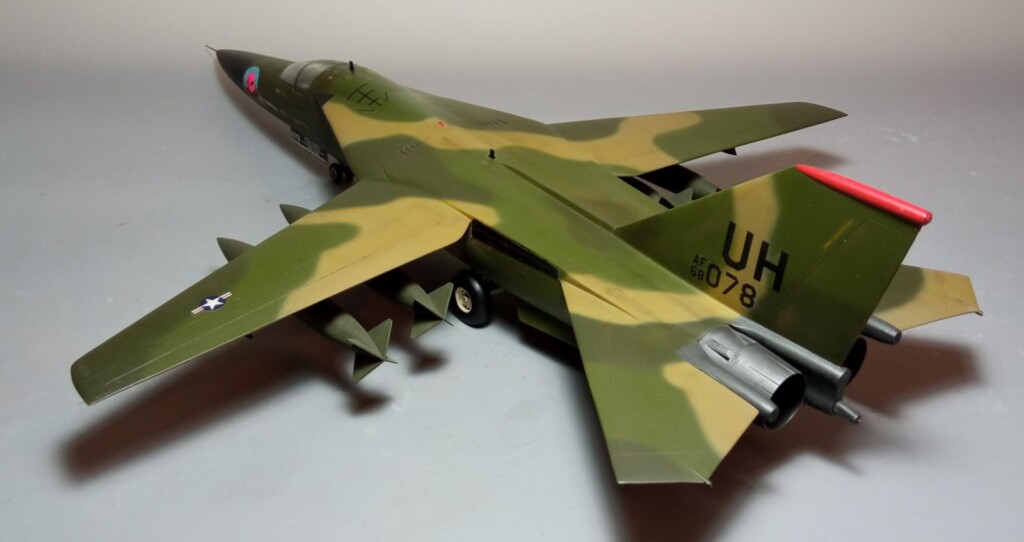
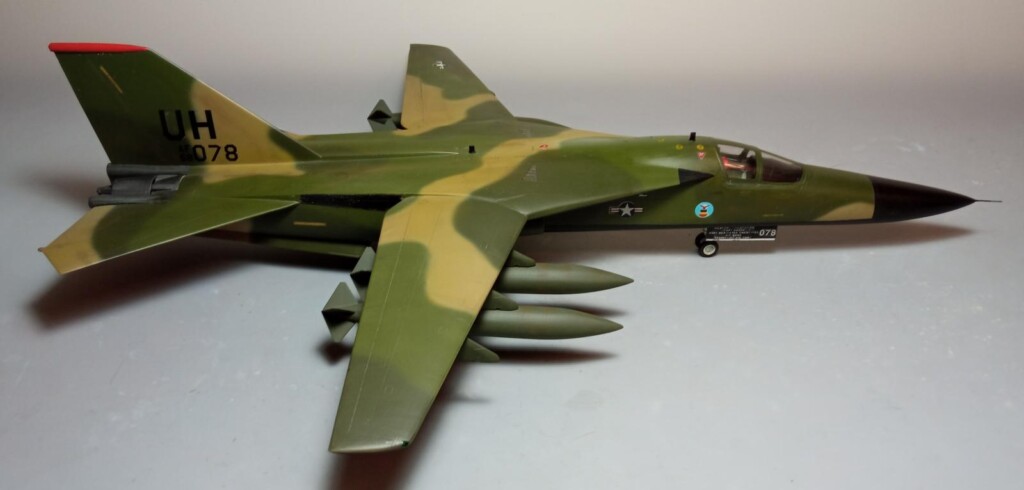
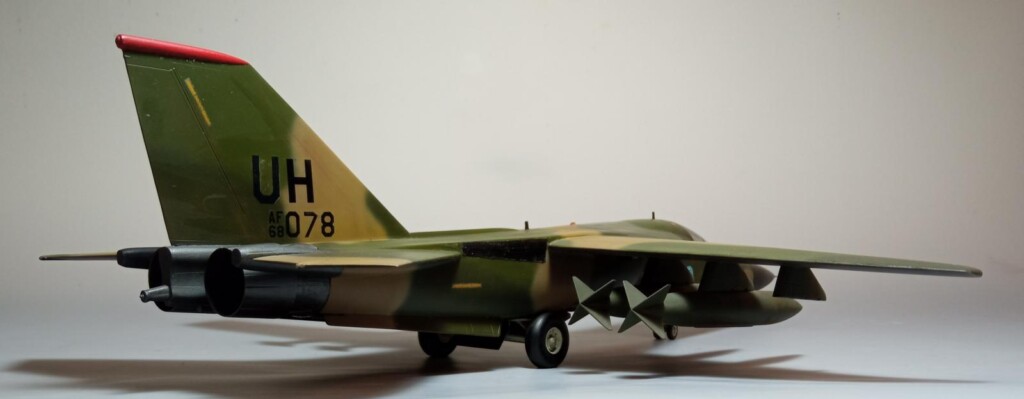


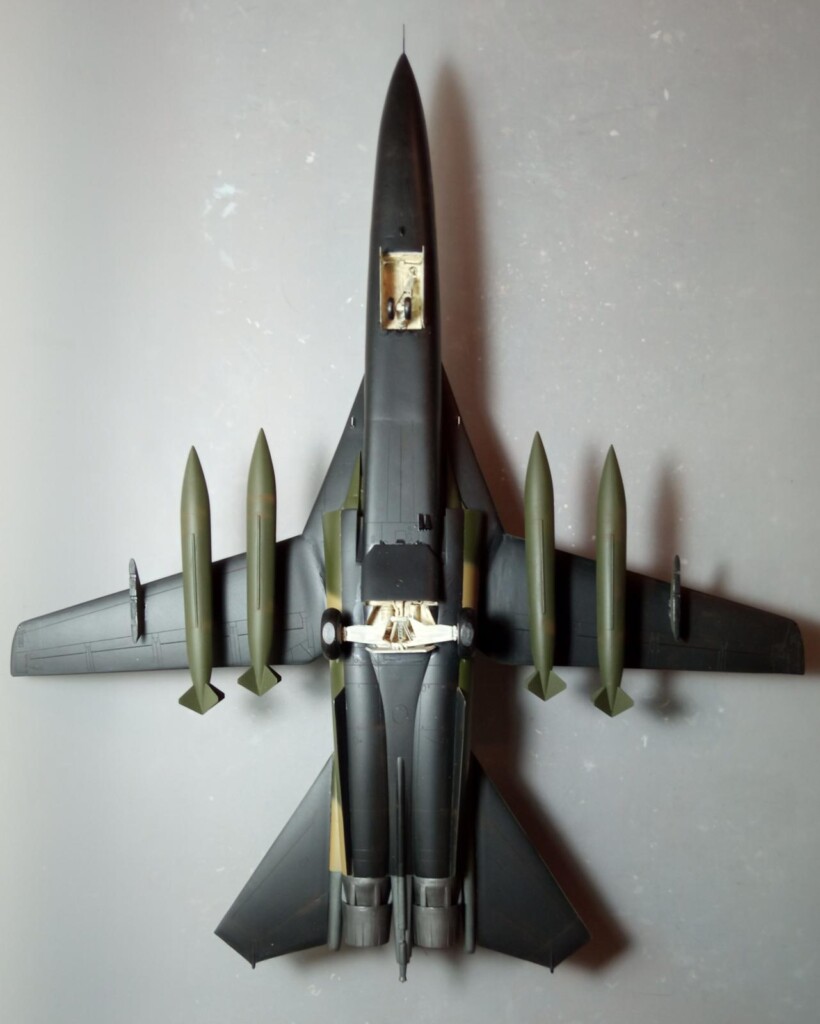
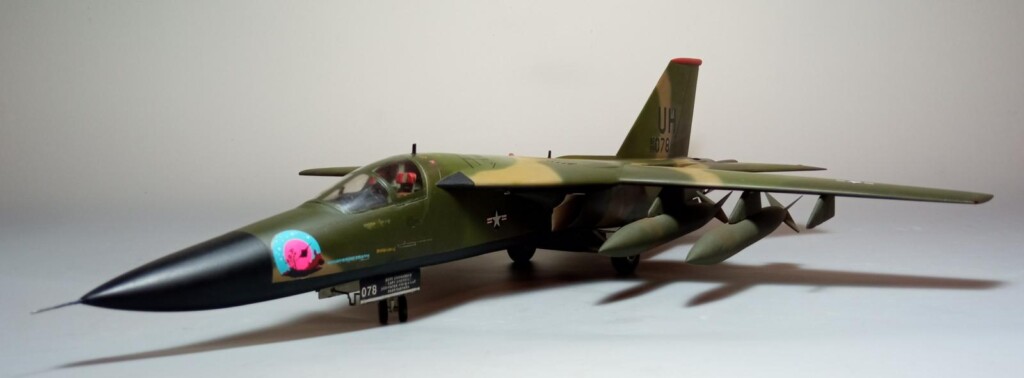
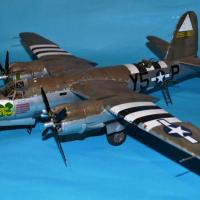
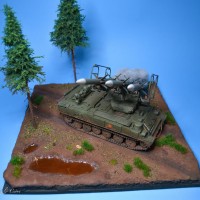

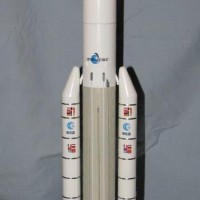
Beautiful Aardvark along with your excellent and informative write up. Way to go once again, Spiros @fiveten. I built one of these as a teenager. I believe it was issued by Revell. The wings could be moved I recall.
Thank you so much, my friend @eb801!
Very nice build! I’ve been thinking about getting the Hobby Boss version but haven’t decided to drop the money for it yet. Your build is certainly pushing to get going on a 111!
Thanks so much, my friend @tolss! Looking forward to yours!
Inspiring build, Spiros!
Thanks a lot, my friend @blackmopane!
Very cool and nicely done
I saw a few of these on the tarmac at Hickam AFB in Hawaii in the late '60s a kid (my father was a USAF officer and we lived in Hawaii at that time). The F-111 looked huge and sleek, rhw opposite of the F4 Phantom IIs that were parked nearby which looked huge and menacing.
Thank you kindly, my friend @gwfabian!
I was fortunate enough to see one taxiing near me at RAF Upper Heyford in 1993. Huge and sleek it was!
That's a great looking F-111, Spiros! @fiveten
Thanks a lot, my friend @jdtruby!
A wonderful build, Spiros @fiveten
You presented this kit with a great article as well.
I have always been impressed by the technique behind the adjustable wing structure and even more about how the wing load did adjust at the same time. A great piece of engineering.
Thank you very much, my friend @johnb! Indeed, an amazing piece of engineering!
@fiveten SWEET! Great build Spiros! When I lived in FLorida on July 4th thy had a pair of them do a fly over….it was stunning. Great great build you died the aircraft justice
Thanks so much, my friend @bikequeen! See them flying over must have been spectacular!
@fiveten, yes it was! It was a blink and you will miss kinda thing 😉
Great work, @fiveten. Other, later, kits may outclass this one, but your application of "some modeling skill required" brings it right "up to snuff." A superb result.
Thank you very much, my friend @tcinla!
What an impressive Aardvark!
Beautifully built and an interesting background story, thanks for sharing this F-111.
Thanks a lot, my friend @alfred!
Excellent work on the old kit and nice solutions to the build issues.
Thank you kindly, my friend @christopher!
Very nice Vark. Seeing one of these in person I am amazed at how large the Vark really was. It was supposed to be out classed by the TSR2 in performance but it was cancelled. Not many planes could have done the low level strike mission that the Vark was designed to do.
Thanks so much, my friend @dbdlee! Indeed, a big, potent machine!
Excellent Aardvark, Spiros.
Great to see another one of your write-ups on the MM site also.
Thank you so much, my friend @georgeswork!
Very nice, Spiros (@fiveten). This is a really big model in 1/48, especially with the wings swept in the forward position. Interior looks really good. Well done.
Thank you very much, my friend @gblair!
Great work Spiros. Always loved this plane and you a great job.
Thank you kindly, my friend @coondog!
Impressive model of an equally impressive aircraft, Spiros, and beautifully finished.
Thank you so much, my friend @chinesegeorge!
Beautiful build Spiros @fiveten. I like what you did with the camouflage! Very clean job. This is a really big bird.
Thanks a lot, my friend @fxrob!
@fiveten
Great looking Aardvark Spiros. The SEA camo is very neatly sprayed.
Did you add any extras in the build?
Thanks a lot, my friend @holzhamer! No extras, strictly OOB.
Very nicely done, Spiros!
Tganks so much, my friend @gwskat!
@fiveten - Fantastic build and write up Spiros. I'm generally amazed when I get to the end and then see that I can read the 'full' write up on ModellingMadness. I'm impressed as always. Beautiful work.
Thank you kindly, my friend @brithebuilder!
Great airbrush work, Spiros. Nice result. That’s a big kit that many of us have sitting in the stash waiting……..
Thank you so much, my friend @j-healy! Looking forward to yours!
Well that Spiros is gorgeous plus a very interesting read to boot. It must be really impressive on this scale.
Thanks a lot, my friend @milantesar! Yes, pretty big!
Spiros, I enjoyed reading the description and history of the F-111’s development. The model is stunning. The tri-color camouflage is very well done. I also built the Revell 1/48 release back in my youth and finished it in navy colors.
Thank you kindly, my friend @russjurco!
Great article, Spiros! 👏 The model and the history are both a delight, keep 'em coming @fiveten! 😁
Thanks a lot, my friend @garybrantley!
A lovely 111! Controversial aircraft, but effective. Another great build from the Pendedekas factory!
Thank you so much, my friend @gkittinger!
Great work @fiveten Spiros. It was my favorite plane growing up. G
Thank you kindly, my friend @graemestreet!
Great modelling result and history of the TFX project, Spiros. Well done!
Thank you so much, my friend @bobd56az!